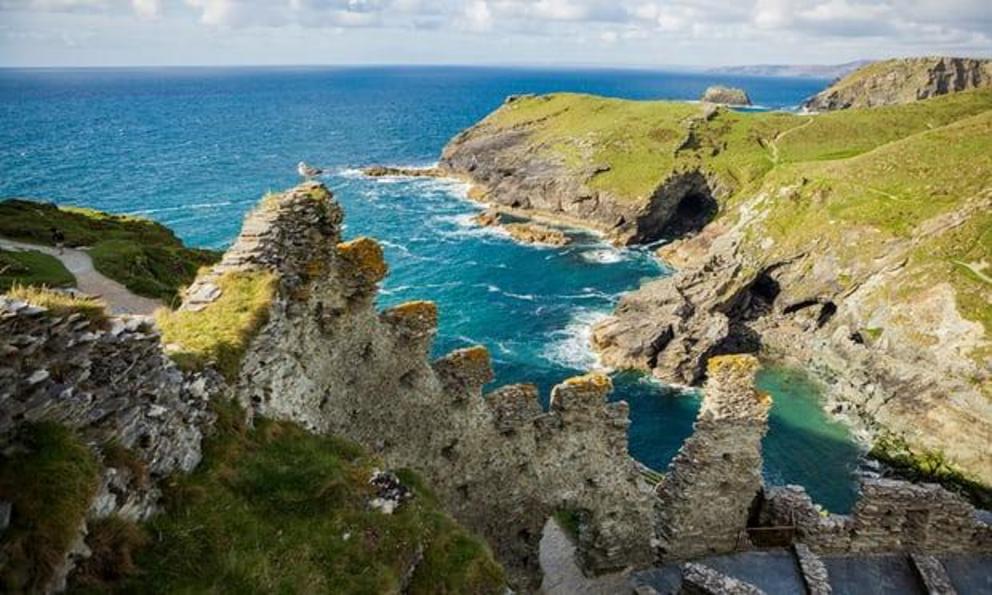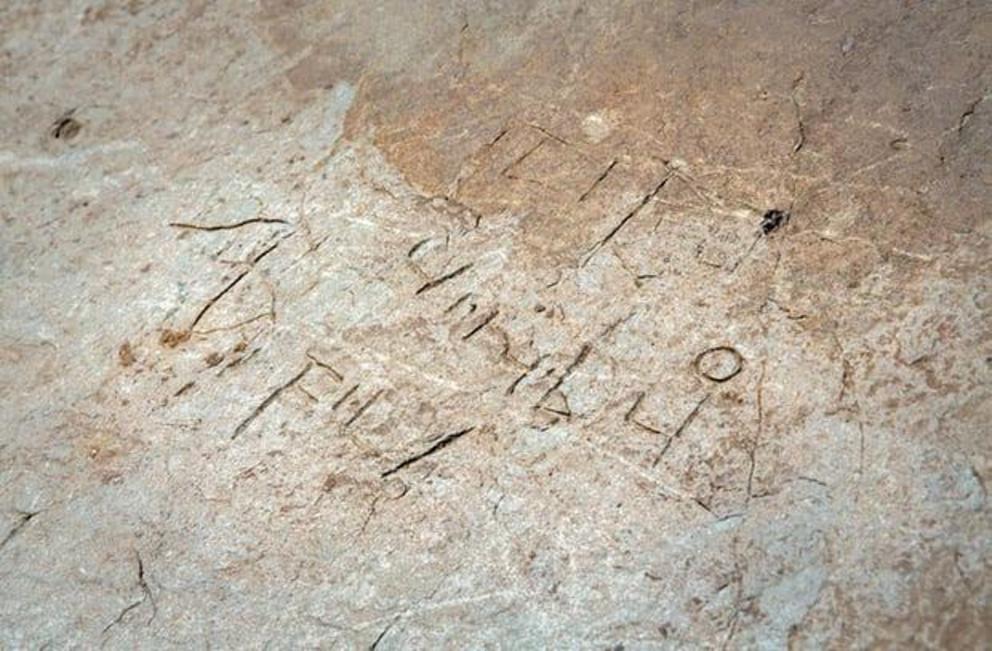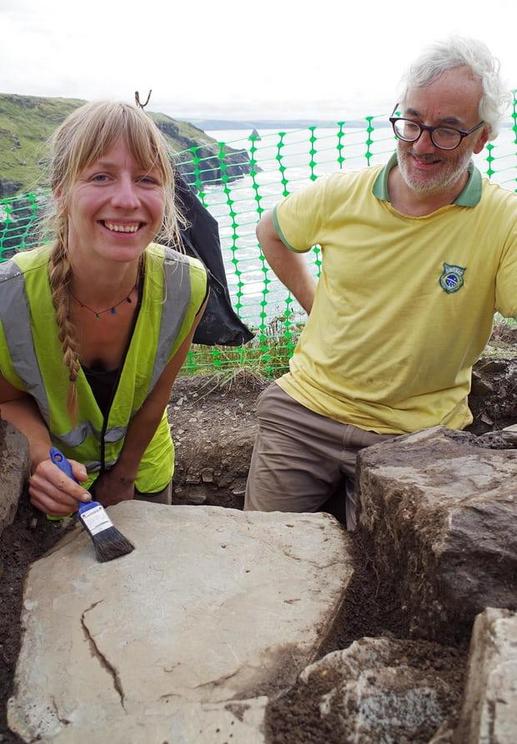Inscribed seventh-century window ledge unearthed at Tintagel
Find adds to view that Cornish site was home to thriving trade port in early middle ages.

The slate ledge was found during excavations of Tintagel Castle in Cornwall, a site associated with the stories of King Arthur. Photograph: Nigel Wallace-Iles/English Herit/PA
A seventh-century slate window ledge inscribed with an intriguing mix of Latin, Greek and Celtic words, names and symbols has been unearthed at Tintagel Castle in north Cornwall.
The discovery adds weight to the view that the rugged coastal site, which is most often associated with the legend of King Arthur, was home in the early middle ages to a sophisticated and multicultural port community.
Put together with other finds including Iberian goblets and bowls from what is now Turkey, the slate ledge suggests Tintagel may well have been an important royal base with trade links stretching from Europe’s Atlantic coast to the eastern Mediterranean.
Tintagel is one of the most spectacular historic sites in Britain. Onsite research is focusing not on the stories of King Arthur but on a settlement from the early middle ages. At least 100 buildings were built on the cliffs and may have been inhabited from as early as the fourth century to as late as the eighth.
The 60cm-long window ledge, which goes on display at Tintagel on Saturday, has been dated to the seventh century.

The inscribed stone uncovered at Tintagel Castle. Photograph: Christopher Ison/English Heritag/PA
It appears to be the work of a scribe practising rather than the finished product, and the style suggests he or she was familiar with both the informal style of writing used for documents and formal script found in illuminated gospels of the period.
The ledge includes what is believed to be a Roman name, Tito, and a Celtic one, Budic. The Latin words fili (son or sons) and viri duo (two men) also appear.
Another intriguing element is a letter “A” with a “V” inside it and a line across the top. The “A” may refer to alpha, which is associated with God. One tail of the symbol morphs into a miniature “A”, which may link back to the word fili. A triangle carved into the slate may be the Greek letter delta.
The ledge was discovered as part of a five-year project commissioned by English Heritage and undertaken by the Cornwall Archaeological Unit (CAU).
Win Scutt, a curator at English Heritage, said: “It’s incredible to think that 1,300 years ago on this dramatic Cornish clifftop someone was practising their writing, using Latin phrases and Christian symbols.
“We can’t know for sure who made these marks or why, but what we can say is that seventh-century Tintagel had professional scribes who were familiar with the techniques of writing manuscripts – and that in itself is very exciting.
“Our research has already revealed the extent of Tintagel’s buildings and the richness of the lifestyle enjoyed here. This latest find goes one step further to show that we have a literate, Christian community with strong connections from Atlantic Europe to the Mediterranean.
“Writing was a privileged pursuit, undertaken by specialist scribes attached to the church or wealthy households. The discovery of this stone supports the idea that Tintagel was an important, thriving trade port, and a high-status settlement which could have been the seat of Cornish kings.”

English Heritage’s Megan Val Baker and John Gould, of Cornwall Archaeological Unit, at Tintagel. Photograph: James Gossip/English Heritage/PA
Prof Michelle Brown, an expert in medieval manuscripts at the University of London, was given the task of deciphering the inscription. She said: “The survival of writing from this period is rare and this is a very important find. The text features a mix of Latin script with some Greek letters, and a distinctive monogram [the shape based on the letter “A”]. It suggests a high level of literacy and an awareness of contemporary writing styles associated with the early illuminated manuscripts of Britain and Ireland.
“Other examples of writing in Cornwall and western Britain at this period take the form of monumental inscriptions on stones, but this example is quite different, with a writing style and layout suggestive of a competent scribe from a Christian background, who was familiar with writing documents and books and who was practising a series of words and phrases rather than carving a finished inscription.”
More examination of the slate ledge will take place with experts trying to pinpoint the tool used to create the letters and even whether the scribe was left or right-handed.
CAU’s principal archaeologist, Jacky Nowakowski, who directed the dig, said the writing emerged when the stone was cleaned.
“We knew straight away that this was something rather special,” she said. “It’s the kind of find archaeologists dream of discovering, and we were amazed to uncover it hidden within the remains of an ancient building.”
